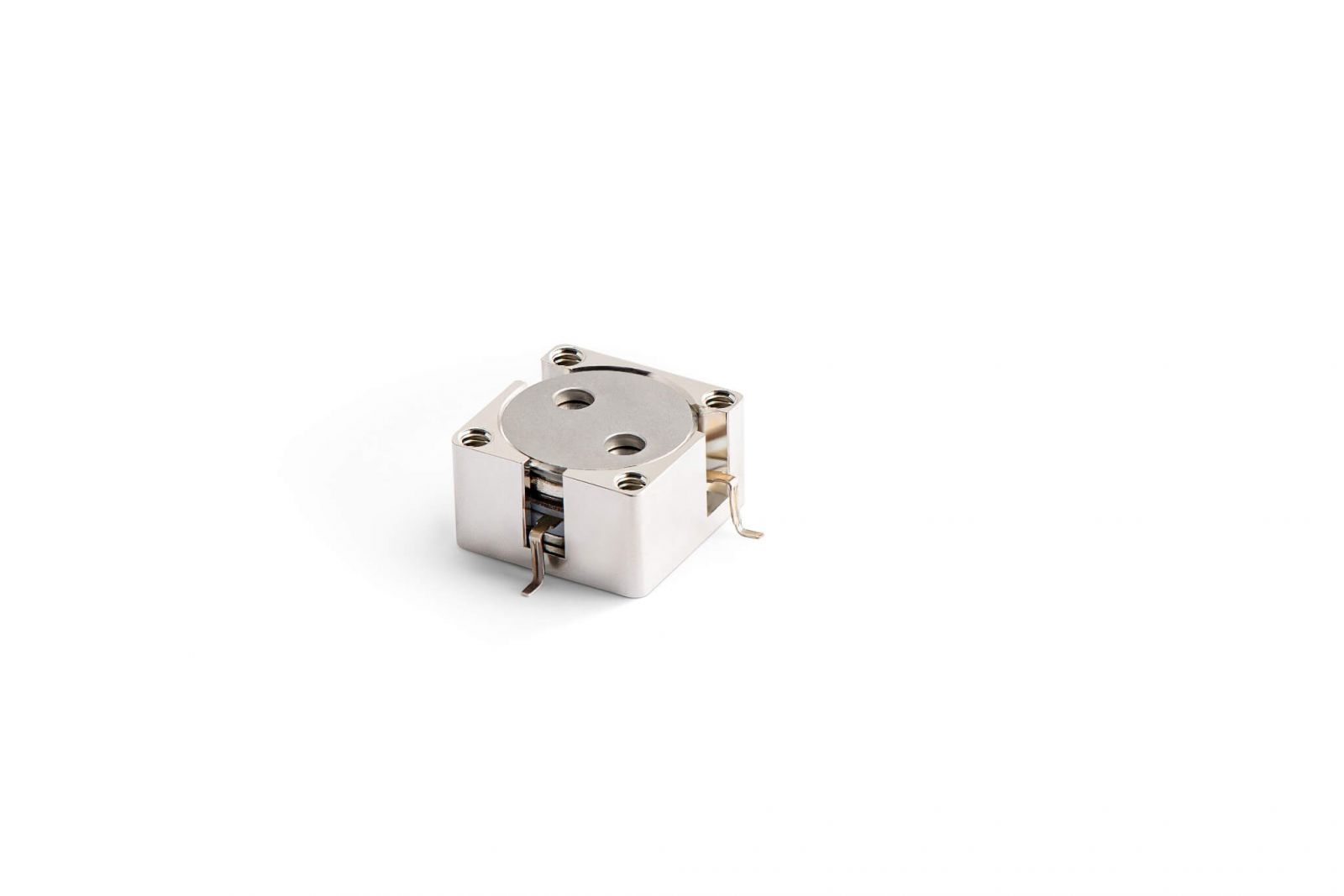- About us
- Product
- Dual-Junction Circulator
-

Dual-junction Microstrip Circulator
-

Dual-junction Drop-in Circulator
-

Dual-junction Coaxial Circulator
- Customized
- Technical Note
- News
- Contact us
Updated on:
Keywords: wideband RF circulator,broadband RF circulator,broadband microstrip circulator,broadband drop-in circulator,broadband coaxial circulator,0.1-18 GHz circulator,RF circulator supplier,HzBeat
As RF and microwave systems move toward multi-band, software-defined and highly integrated architectures, engineers are under pressure to cover more spectrum in less space. One key building block enabling this trend is the wideband RF circulator: a non-reciprocal three-port device that provides low-loss signal routing and isolation across octave or multi-octave frequency ranges.
HzBeat offers a complete portfolio of broadband microstrip, drop-in and coaxial circulators covering roughly 0.1–18 GHz, with different models optimized for PCB-level integration, compact modules and connectorized systems. This article summarizes how these wideband circulators work, where they are used, and how to select the right structure for your RF design.

An RF circulator is a three-port, non-reciprocal device that routes energy sequentially from Port 1 to Port 2, Port 2 to Port 3, and Port 3 back to Port 1. By enforcing this one-way circulation, the component can be used to:
A circulator is considered wideband when it maintains its core specifications — insertion loss, isolation and port matching — over a broad relative bandwidth, not just a narrow center band. For example, HzBeat broadband microstrip circulators cover 2–6 GHz and 6–18 GHz with usable isolation and low loss across the full range, while broadband drop-in and coaxial series start as low as 0.1 GHz and extend up to 18 GHz.
HzBeat has developed three major structural families of wideband circulators: microstrip for board-level integration, drop-in for compact, high-power modules, and coaxial for connectorized systems. Each platform covers different frequency ranges but shares the same focus on broadband performance, high isolation and stable matching.
The broadband microstrip circulator series is designed for S-, C-, X- and Ku-band applications, with typical products covering 2–6 GHz and 6–18 GHz, and additional models for 8–12 GHz and 8–18 GHz.
Using planar microstrip junctions with ferrite pucks, these circulators offer:
| Frequency range | Topology | Max insertion loss | Min isolation | Max VSWR | Typical CW power |
|---|---|---|---|---|---|
| 2.0–6.0 GHz | T- or Y-junction | ≤ 1.2 dB | ≥ 11 dB | ≤ 1.7 | ≈ 30 W |
| 6.0–18.0 GHz | T- or Y-junction | ≈ 1.0–1.2 dB | ≥ 11 dB | ≤ 1.7 | ≈ 15–30 W |
| 8.0–12.0 GHz | T-junction | ≈ 0.5 dB | ≈ 19 dB | ≈ 1.25 | ≈ 10 W |

The broadband drop-in circulator series targets high-performance modules in VHF, UHF and lower-microwave bands, with typical frequency ranges such as 0.1–0.4 GHz, 0.3–0.6 GHz, 0.5–1.0 GHz, 1.0–2.0 GHz, 2.0–4.0 GHz and 2.0–6.0 GHz.
According to HzBeat's product description, these circulators are designed to provide:
Because of their combination of power capability, broadband behaviour and compact “drop-in” form factor, these circulators are widely used in radar T/R modules, base-station front-ends, electronic warfare equipment and multiband/broadband amplifiers.

For rack-mount systems, test setups and flexible cable-based architectures, HzBeat offers a broadband coaxial circulator series that covers frequency ranges from **0.1–0.4 GHz** up to **6–18 GHz**, with intermediate bands such as **0.5–2 GHz**, **1–4 GHz** and **2–8 GHz**.
Key features highlighted in the product page include:
These characteristics make broadband coaxial circulators especially suitable for high-power radar transmitters, communication base stations, SatCom ground stations, electronic countermeasures and test & measurement systems where coaxial cabling dominates the RF layout.
Although microstrip, drop-in and coaxial structures differ mechanically, their roles in RF systems are closely related. Across the 0.1–18 GHz spectrum, HzBeat wideband circulators are used in:
In phased-array and multifunction radar, wideband circulators in T/R modules enable a single antenna aperture to handle multiple modes or bands. They route high-power transmit pulses to the antenna while directing weak echo signals to the receiver and isolating sensitive front-end stages from reflected power. In electronic warfare systems, wideband circulators support agile jamming and surveillance channels over large bandwidths.
Modern base stations and 5G/6G small cells often operate across several licensed bands. Wideband circulators allow shared-antenna architectures and simplified RF front-ends, particularly in TDD systems where transmit and receive share the same RF path but must remain well isolated in time and amplitude.
In satellite communication terminals and gateways, broadband circulators help separate uplink and downlink paths, protect high-power amplifiers and ensure stable performance over operating bands such as S, C, X and Ku. Compact microstrip and drop-in devices are often used inside outdoor units and BUC/LNB assemblies, while coaxial circulators integrate easily at rack level.
Vector network analyzers, spectrum analyzers and RF test fixtures rely on good port isolation to prevent reflected signals from damaging internal sources and detectors. Wideband circulators allow engineers to sweep across large frequency spans without changing hardware, improving efficiency in both R&D labs and production environments.
From an engineering standpoint, selecting a suitable wideband circulator usually comes down to three questions:
For projects with unique combinations of frequency, power, bandwidth and mechanical interface, HzBeat supports customized wideband circulator designs built on the same ferrite and broadband-matching platforms used in the standard product families.
HzBeat (Chengdu Hertz Electronic Technology Co., Ltd.) is a specialized RF and microwave component manufacturer focusing on ferrite-based circulators and isolators from 20 MHz up to 200 GHz. The portfolio spans microstrip, drop-in, coaxial and waveguide formats, enabling designers to choose the optimal structure for each power level and integration scenario.
Within this portfolio, the broadband families discussed here provide wideband coverage from approximately 0.1–18 GHz with low insertion loss, high isolation and robust power handling:
For technical documentation, samples or design support, visit www.hzbeat.com or contact [email protected].
About the Author
HzBeat Editorial Content Team
Sara is a Brand Specialist at Hzbeat, focusing on RF & microwave industry communications. She transforms complex technologies into accessible insights, helping global readers understand the value of circulators, isolators, and other key components.